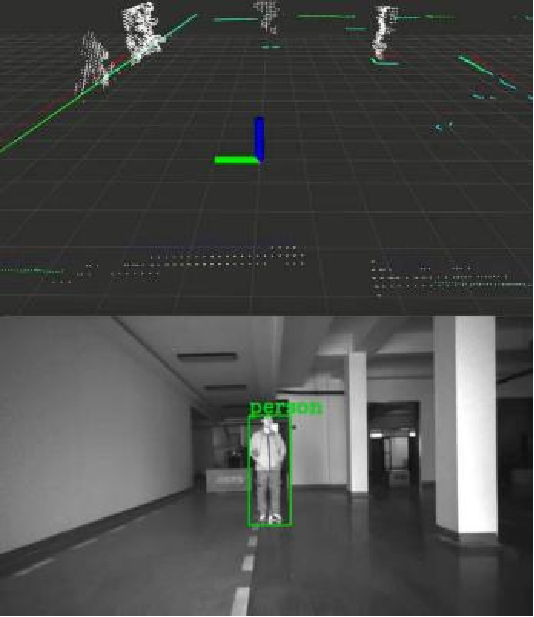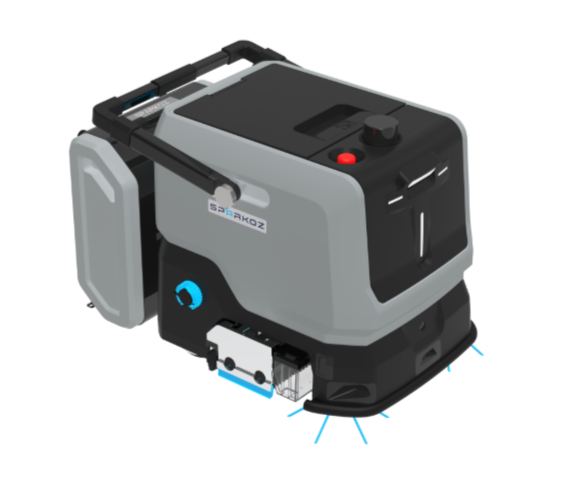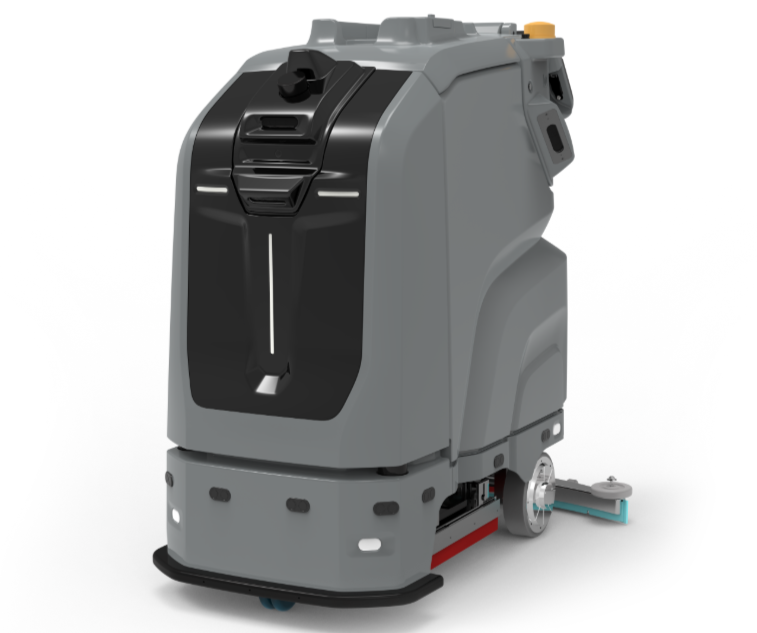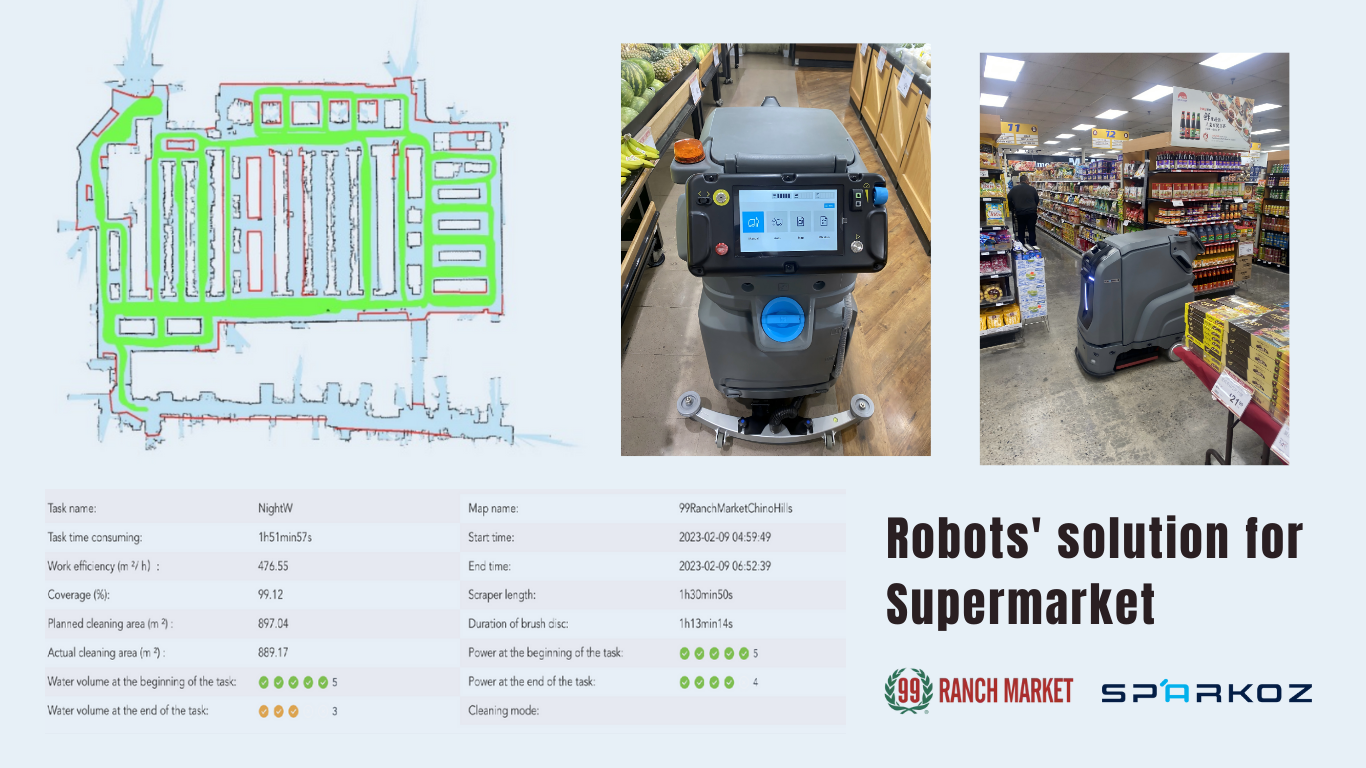Introduction
Keeping large commercial facilities spotless is a challenge that has long depended on labor-intensive manual methods. Today, however, advancements in robotics and artificial intelligence are transforming the way we clean. Autonomous floor scrubbers now deliver a level of efficiency, consistency, and safety that manual processes simply cannot match. Companies like Sparkoz are leading the revolution with innovative products designed to reduce costs, improve hygiene, and boost overall productivity.
The Evolution of Commercial Cleaning
The history of commercial cleaning is one of gradual innovation.In earlier decades, cleaning was performed manually with brooms, mops, and buckets—methods that were both physically demanding and often inconsistent. With the advent of the industrial revolution, mechanical equipment such as vacuum cleaners and powered scrubbers began to make an appearance. Although these machines eased some of the manual burdens, they still required human oversight and intervention.
Over time, incremental technological improvements paved the way for a more radical transformation: the integration of autonomous robotics into cleaning routines. This shift addresses not only labor shortages and rising costs but also the need for more reliable, measurable cleaning results.Recent insights from industry leaders have emphasized that robotic cleaning represents a paradigm shift from traditional methods to automated, data-driven processes.
Technological Innovations in Autonomous Cleaning
Modern autonomous floor scrubbers are a marvel of engineering, combining several advanced technologies:
Sensor Fusion and Navigation:
These machines integrate LiDAR, high-definition cameras, and multiple sensors to create detailed maps of their surroundings. This technology allows them to detect obstacles, plan efficient routes, and adapt to changing floor conditions automatically.

Artificial Intelligence and Machine Learning:
AI algorithms continuously refine cleaning patterns by learning from each cycle. This results in improved performance over time, ensuring that cleaning is both thorough and consistent.
Cloud-Based Digital Management:
Remote monitoring platforms enable facility managers to track cleaning progress, schedule tasks, and access real-time performance data from anywhere. This connectivity helps optimize operations and quickly identify any issues.
Self-Maintenance Features:
Advanced diagnostics help reduce downtime by automatically detecting maintenance needs, ensuring that the robot spends more time cleaning and less time out of service.
Sparkoz:Redefining the Cleaning Standards
Sparkoz stands out in the field of autonomous cleaning by offering two flagship products:
TN10:
A compact, high-efficiency robot designed for smaller or confined spaces. Despite its size, the TN10 is equipped to sweep,wash,vacuum,and mop without human intervention. Its advanced navigation system ensures even the tightest corners are reached and cleaned.

TN70:
Engineered for large-scale operations, the TN70 boasts a robust design ideal for environments like supermarkets,airports,and hospitals. With a 70-liter water tank and powerful scrubbing capabilities, it is designed to cover extensive areas quickly and effectively.Both models automatically dock, charge,refill water, and drain waste—all while providing real-time data via a cloud-based management system.
These innovations set a new benchmark for cleaning performance, combining operational efficiency with reliable, measurable results.

Case Study:99 Ranch Supermarket
A prime example of the benefits of autonomous cleaning is the deployment of Sparkoz robots at 99 Ranch Supermarket.In this bustling retail environment,maintaining impeccable hygiene is essential. Here’s how the technology made a difference:
High Efficiency in Large Areas:
The TN70 was deployed in high-traffic aisles and meat sections, achieving peak cleaning efficiencies of up to 9,300 ft²/h and averaging around 5,200 ft²/h hour.This capability ensured that even during the busiest hours, the store maintained consistently high cleanliness.

Precision Cleaning in Critical Zones:
For the store’s edges and specialized areas like the produce section and cashier zones, the TN10 excelled by cleaning 4,800 ft²/h per hour.In the produce section, it completed the cleaning process in just 40 minutes,and overall, the entire store area(approximately 10,000 ft²)was cleaned in about three hours.
This real-world application highlights how autonomous floor scrubbers not only enhance cleaning performance but also streamline operations in large, complex environments. These approaches resulted in significant labor savings and improved cleaning consistency.
Follow us on youtube to see video demo.
https://youtube.com/playlist?list=PLLON_2XHovS_p-HfSo0rrFwPnrKInlNEr&si=vaQSNPXL7kmXivpK
The Business and Environmental Benefits
The shift to autonomous floor scrubbers brings numerous advantages that extend beyond simple cleanliness:
Operational Cost Savings:
By automating labor-intensive tasks, businesses can reduce the number of cleaning shifts and reallocate staff to more critical responsibilities. This results in lower labor costs and improved overall productivity.
Enhanced Consistency and Reliability:
Autonomous robots follow pre-programmed routes and adaptive cleaning patterns, ensuring that every part of a facility is cleaned uniformly. This consistency is vital in maintaining high hygiene standards, particularly in sensitive environments such as healthcare and food retail.
Improved Safety:
Robots operate safely with advanced obstacle detection and emergency-stop features, reducing the risk of workplace injuries. They also allow cleaning to take place during off-peak hours,minimizing disruptions to business operations.
Environmental Impact:
These machines are designed to use water and cleaning chemicals more efficiently. By delivering precise amounts of cleaning solution, they reduce waste and help minimize the environmental footprint of cleaning operations. Energy-efficient motors and rechargeable batteries further contribute to sustainability goals.
Data-Driven Insights:
Cloud-based management systems provide real-time monitoring and detailed performance reports. This data empowers facility managers to fine-tune cleaning schedules, perform proactive maintenance, and make informed decisions to continuously improve cleaning operations.
The Future of Autonomous Cleaning
As technology continues to advance, the capabilities of autonomous floor scrubbers are set to expand further. Future developments may include:
Enhanced Sensor Capabilities and AI Algorithms:
New generations of robots are expected to feature even more sophisticated sensor arrays and predictive AI, enabling them to navigate more complex environments and adapt cleaning protocols dynamically.
Deeper Integration with IoT and Smart Building Systems:
Autonomous cleaners may soon connect with broader building management systems, receiving real-time updates on occupancy levels, air quality,and other environmental factors to adjust cleaning strategies automatically.
Increased Customization and Scalability:
With modular designs and customizable features, future models will better serve diverse industries—from healthcare and hospitality to education and manufacturing—ensuring that every environment benefits from automated cleaning solutions.
Sustainability and Energy Efficiency:
Continued focus on reducing water, chemical usage,and energy consumption will make robotic cleaning not only more cost-effective but also more environmentally friendly.
Conclusion
The transformation of commercial cleaning through autonomous floor scrubbers marks a significant milestone in facility management. From their humble beginnings as manual labor tools to today’s advanced,sensor-driven machines, cleaning technology has evolved remarkably. Sparkoz’s TN10 and TN70 exemplify how automation can deliver superior cleaning performance, substantial cost savings, and enhanced safety—all while contributing to a greener environment.
The success seen at 99 Ranch Supermarket is a powerful testament to the potential of these systems. As the industry moves toward greater automation, businesses that embrace these innovations will not only experience improved operational efficiency but will also position themselves as leaders in a rapidly changing landscape.
For companies ready to revolutionize their cleaning processes, the answer lies in embracing automation. Autonomous floor scrubbers are not just a technological advancement; they are a strategic investment in efficiency,consistency,and sustainability. To learn more about how Sparkoz’s groundbreaking solutions can transform your cleaning operations, contact us today.